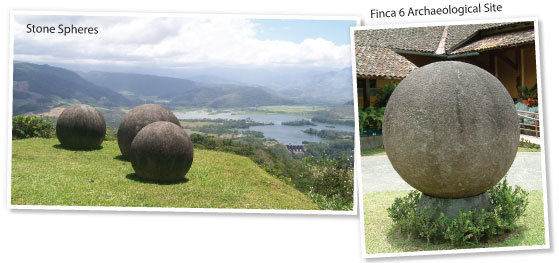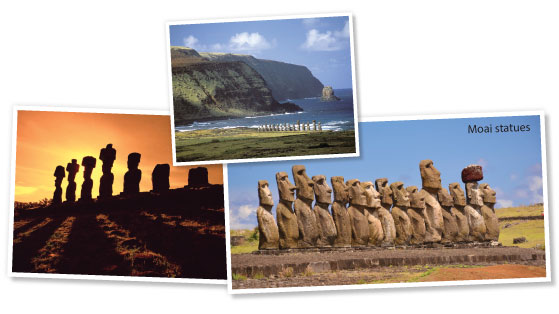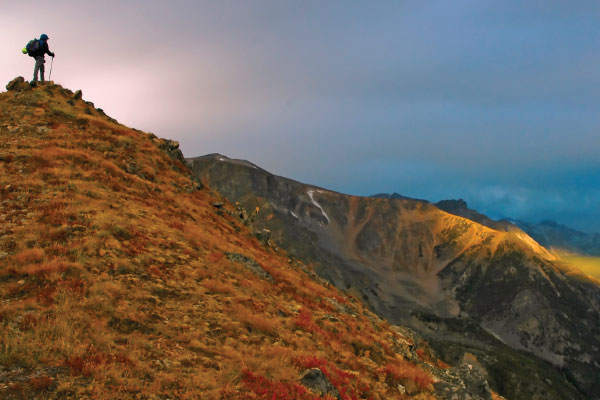Who doesn’t like a good mystery? Take a trip to some surreal corners of the world with Ankita Mamgain and see if you can uncover the unknown.
More than 200,000 people sent in applications when Dutch non-profit company Mars One announced a no-return trip to the Red Planet. Whether Mars One is a hoax or not is a different story; but no one ever imagined such an overwhelming response for a journey into the unknown. It presented a once-in-a-lifetime opportunity of experiencing something truly “out of this world”. It is the thrill of exploration and uncovering mysteries that has brought us this far as a species. We might be ready to uncover the secrets of the universe, but many unsolved mysteries still remain on our own planet that have attracted explorers for centuries and yet still leave many questions unanswered. This month we journey to some of the Earth’s mystical corners. And although we may not find answers, an inexplicable end to a story has a unique hold on our imagination, making these bizarre nooks truly magical.

Nazca Lines, Peru
An unexplained archaeological mystery lies etched on the Pampa Desert in the Nazca region of Peru and attracts thousands of archaeologists, scientists, history buffs, new-age mystics and curious tourists. These are gigantic geoglyphs of geometric patterns, animals, human figures and thousands of perfectly straight lines which go on for kilometres. The only way to fully observe them is from the sky. Nobody actually knows who made them or why, but visitors have proposed every imaginable explanation – from runways for spaceships to tracks for Olympic athletes, from op art to pop art and astronomical observatories.
For the locals these drawings have their own relevance. The monkey, measuring 300 feet (90 metres) in length, has five fingers on one hand and four on the other and is considered to represent the nine months of drought in Nazca. The spider is said to represent fertility and water, as this insect usually appeared before it was going to rain. The hummingbird, condor and flamingo represent the summer and winter solstices and their beaks still point to the exact location the sun rises and sets in Nazca.
Make sure to add this day-trip while visiting Peru’s more popular tourist haunt, Machu Picchu. Board a small Cesna aircraft for a scenic air tour over the enigmatic Nazca Lines for an aerial experience of a lifetime!
Stone Spheres, Costa Rica
One of the strangest mysteries in archaeology was discovered in the Diquis Delta of Costa Rica in the 1930s; a collection of almost perfect spherical orbs ranging in size from a few centimetres to over two metres in diameter. Believed to have been created between 200BC and 1600BC, these monolithic sculptures are made by human hands, with granodiorite, a hard, igneous stone. Locals call these spheres ‘Las Bolas’ and they can be found in many parts of Costa Rica.

Perhaps the best place to learn more about them is Finca 6 Archaeological Site in Palmar Sur.
Out of around 300 stone spheres in Costa Rica, more than 10 per cent of them lie on this 10-acre property which is one of the few places in Costa Rica where archaeologists have found spheres that were clearly associated with other structures. It’s also one of the few sites where they’ve found well-preserved spheres still in their original location.
Of course legends and folklore have added more to the enigma of the stones. Some believe they came from Atlantis and were polished smooth by the water, others think they’re the work of aliens. Some stories from the Bribri culture suggest that Tara (or Tlatchque), the god of thunder, used a giant blowpipe to shoot these cannonballs at the gods of the winds and hurricanes in order to drive them away.
Legends and laboratories, both have failed in providing a conclusive explanation about these icons of Costa Rica’s cultural identity.
Easter Island, Chile
Few areas in the world possess a more mystical and magnetic vibe than this tiny speck of land off Chile. Rapa Nui to its native Polynesian inhabitants, Easter Island is home to some of the most bizarre statues in the world.
They reveal their creators to be master craftsmen and engineers. The 887 giant Moai rock statues, the lightest weighing 86 tons, were built and then moved around from platform to platform, on the island. The exact purpose of these statues, the role they played in the ancient civilization of Easter Island and the way they may have been constructed and transported, remains a mystery.

Measuring 14 miles long by seven miles wide, the island was formed by a series of volcanic eruptions. In addition to its hilly terrain, it contains many subterranean caves with corridors that extend deep into mountains of volcanic rock.
But Easter Island is much more than an open-air museum. Diving, snorkelling and surfing are other excellent activities one can engage in. There’s no better way to explore the island than on foot, from a bike saddle or, if you are familiar with it, on horseback. But if in addition to history, sun and surf is your scene, a couple of superb expanses of white sand will make your trip truly memorable.





































